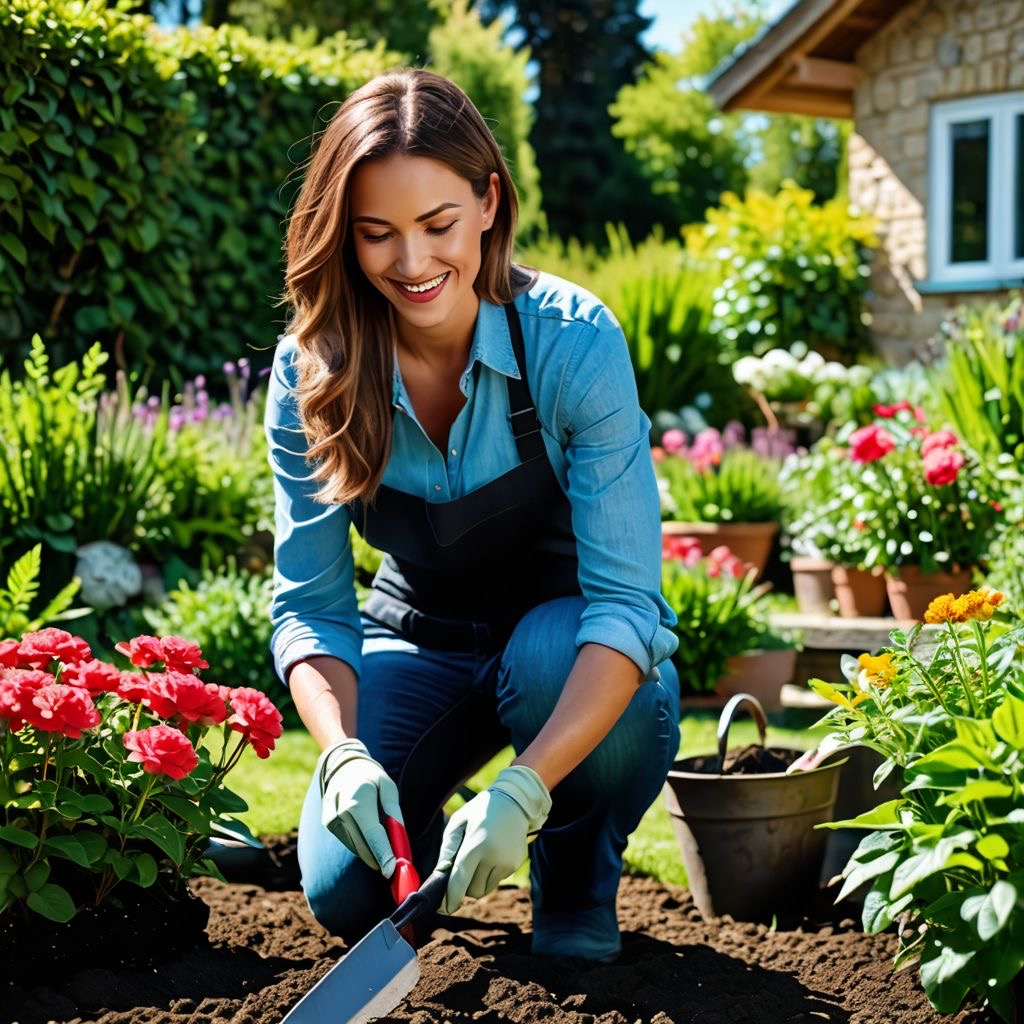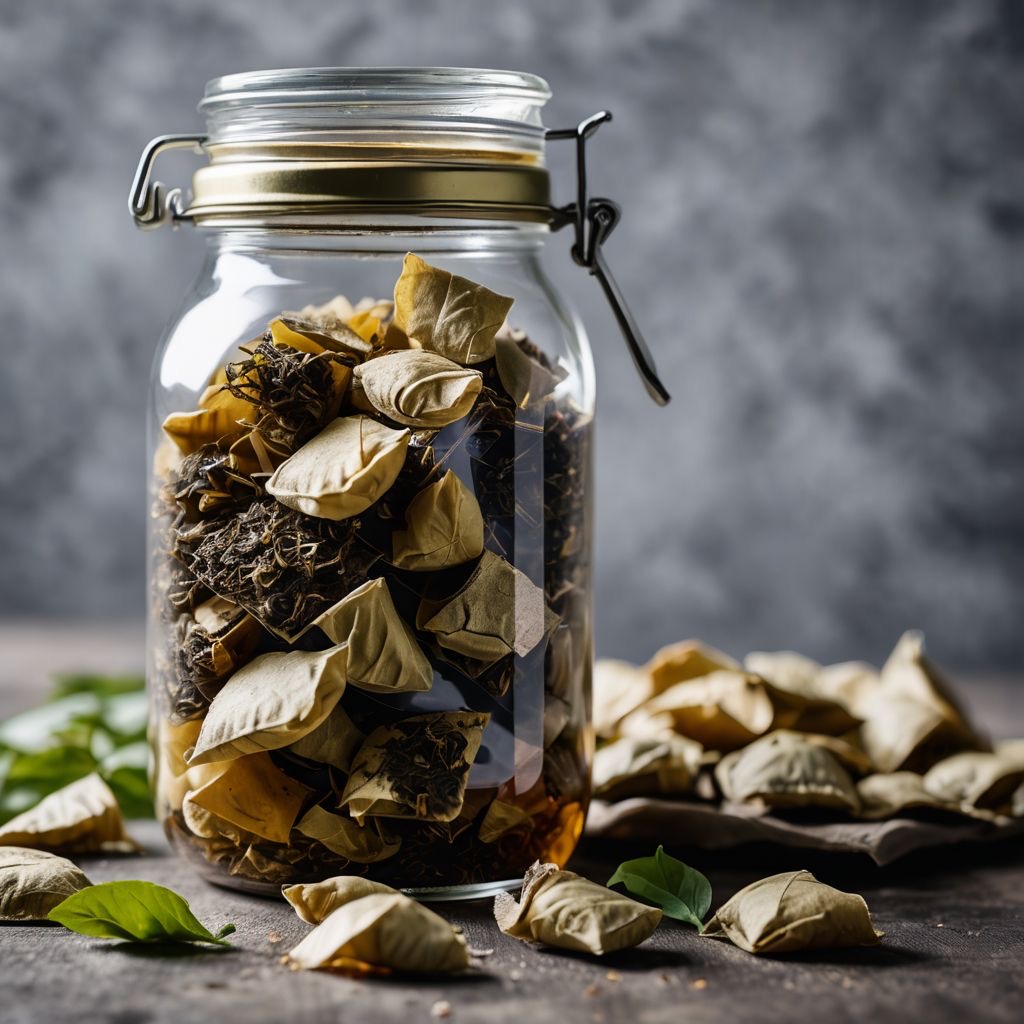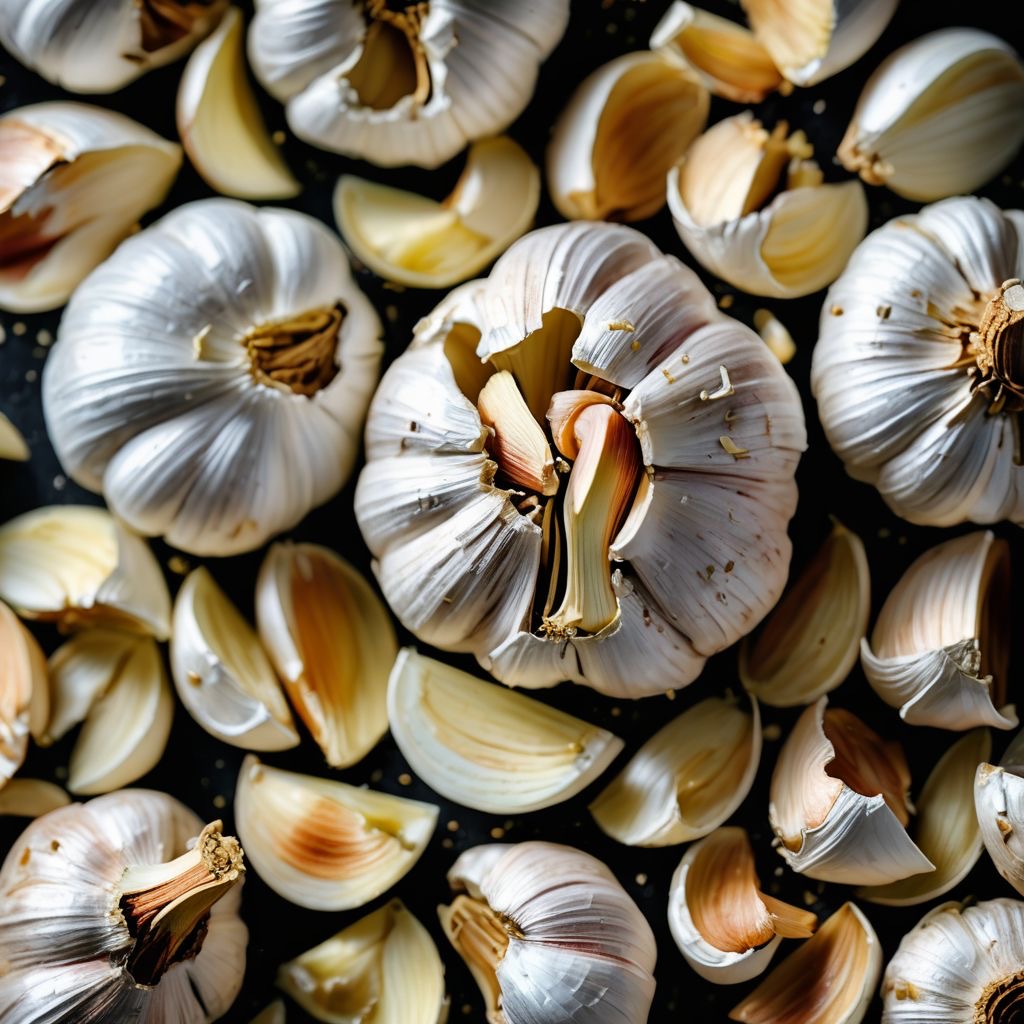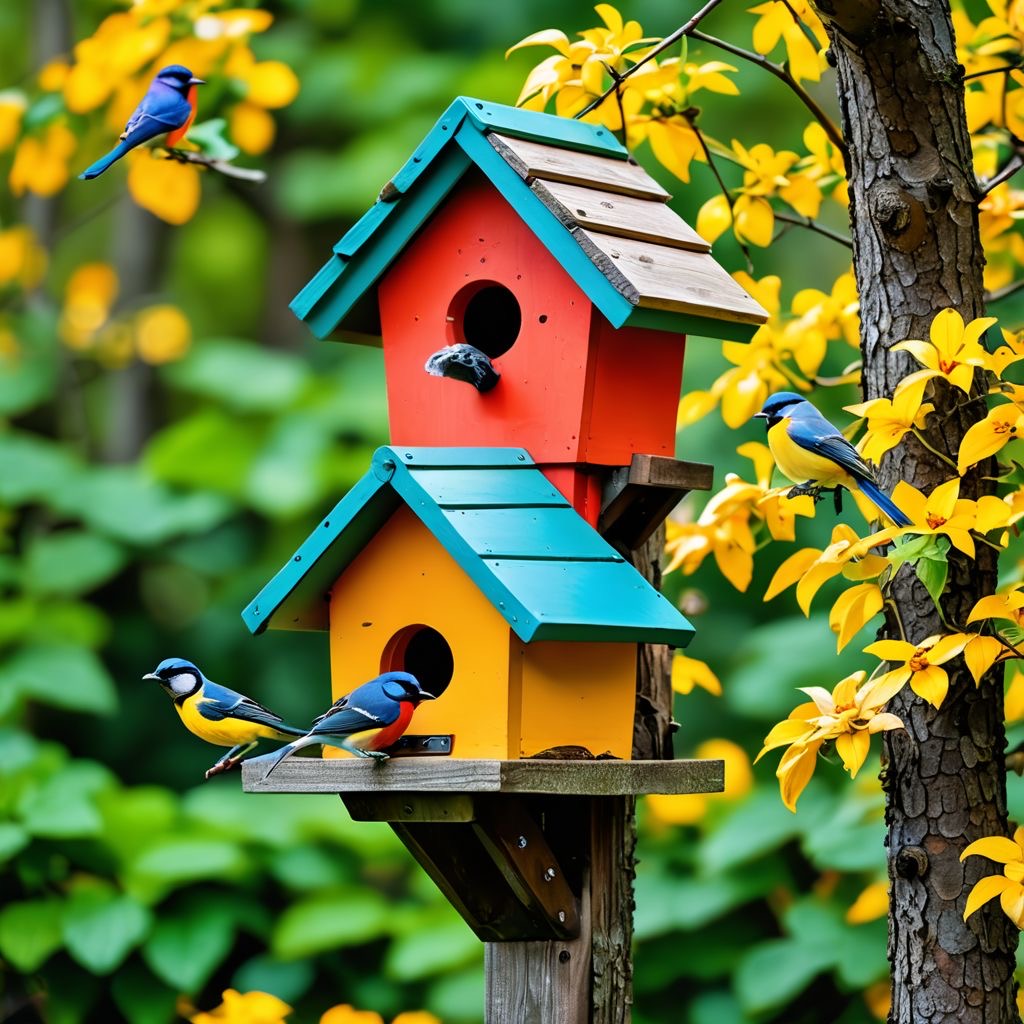
Table of Contents:
1. Introduction
2. Newspapers for Garden Weed Control
3. Using Acorns: Transforming Nutty Nature into Garden Gold
4. Coconut Coir: The Under Rated Hero of Moisture Retention
5. Harnessing the Power of Essential Oils: Natural Aids for Garden Enthusiasts
6. Innovative Garden Protection: How to Use Tea to Ward Off Bugs
7. Controlling Pests Naturally: The Power of Garlic in Your Garden
8. Creating a Sustainable Garden Ecosystem
9. Incorporating Old Fabrics into Winnipeg Garden Design
10. All About Composting: Level Up Your Soil's Health
11. Conclusion
1. Introduction:
Ah, the joys of gardening—there’s nothing quite like the feeling of digging your hands into rich, earthy soil, watching your plants flourish, and bragging about your stunning rose garden to your friends.

But let’s be honest for a minute; backyard gardening isn’t always a walk in the park (or a stroll through the botanical garden). It involves a bit of manual labor, a fair share of trial and error, and quite a lot of creative thinking when it comes to enriching your top soil and maintaining your home garden. So, what if I told you that you can go from your closet to composting with items you already have at home? Yes, you heard that right! Your old fabrics, newspapers, and acorns can serve a more noble purpose.
Contact us today for your free estimate.
In this blog, we’re going to take a quirky and quite humorous look into some unconventional yet effective ways to supercharge your Winnipeg garden’s soil and overall environment. We'll explore everything from the humble newspaper that could aid in garden weed control to the technological marvel that is coconut coir, and even how to utilize the nutty delights of acorns and the exquisite aroma of essential oils.
You'll be navigating through some innovative garden protection techniques, too, such as using Nestle tea or the handyman’s secret weapon—garlic! And let’s not forget, with winter knocking on the door, it’s a great time to gear up for the next gardening season! So grab your Tupperware of fabric remnants, gather your acorns, and keep your essential oils close as we delve into unique garden ideas that will make your plants worship at your feet.
Now, let’s roll up our sleeves and dive into how our old fabrics can play a starring role in enhancing our Winnipeg gardens—not to mention save a few bucks on organic gardening supplies!
2. Newspapers for Garden Weed Control:
Let’s begin with a staple of any good household—newspapers! Don’t let them collect dust in the corner; they can do wonders for your flower bed design. Here’s the scoop: newspapers, when layered strategically, act as a weed barrier. Just imagine it as a superhero cape for your plants, defending them from unwanted sproutlings.

2.1 How It Works
The method is simple: Gather a stack of old newspapers (black-and-white print works best), and lay them down over the ground where you wish to control weeds. You could even consider wetting the paper slightly to keep it in place during wind gusts. Cover your newspaper layer with a healthy layer of mulch, and voilà! You've just built a welcoming fortress for your precious plants. Not only will this help suppress those pesky weeds, but it will also decompose slowly, enriching your soil.

2.2 Composter’s Delight
A fun fact: Newspaper isn’t just good for weed control; it's a great addition to your compost bin as well! Shredded or torn into pieces, it’s a useful ingredient to balance the high nitrogen materials in your compost pile. Why let it sit in a landfill when it can contribute to your home garden, enriching life in the soil for your future seeds?
Utilizing newspapers for yard maintenance in Winnipeg is both eco-friendly and practical. When weeds grow excessively, they can compete for the nutrients that your plants so desperately need. Therefore, by using newspapers proactively, you’ll not only make your garden look aesthetically pleasing, but you’ll also ensure a healthier, thriving garden ecosystem.
Contact us today for your free estimate.
3. Using Acorns: Transforming Nutty Nature into Garden Gold:
Next up, we’re tapping into the ancient wisdom of... acorns! Typically associated with squirrels planning their winter hibernation, these little nuts can do great things for your plants, too.
3.1 Why Use Acorns?
Acorns are packed with nutrients and can be a boon for your backyard landscape design. They contain tannins, which aid in soil pH balance, promoting a healthier growing environment for your blooming beauties. Crush them into smaller pieces and sprinkle them around your flower garden. They act as a slow-release organic fertilizer, feeding your plants without the need for chemical additives.

3.2 The Squirrel Factor
Of course, we cannot forget about our furry pals. If you’re feeling generous, toss some whole acorns into the garden for the squirrels. They’ll help in natural seed dispersal, aiding in the growth of new saplings! It's a win-win situation, and you'll have happy critters in your yard, giving your garden a lively touch.

3.3 Decreasing Food Waste
Additionally, using acorns utilizes a resource that many would overlook. Consider organizing a small community gathering during fall, where neighbors can bring in bags of acorns. You can have fun while benefiting your gardens and providing a welcoming home for local wildlife. Nature’s circle continues as you gather, share knowledge, and contribute to a healthier ecosystem.
In case you're wondering about storage, simply toss those unwanted acorns in a jar until you’re ready to make your garden bloom. So the next time you're out on a walk and you see a sea of acorns, think of them as little nuggets of garden gold just waiting to be utilized!
4. Coconut Coir: The UnderRated Hero of Moisture Retention:
Moving on, let’s chat about a game-changer in garden maintenance: coconut coir. This underrated material has been gaining popularity among gardeners for its stellar moisture retention capabilities. If you haven't heard of it yet, get ready to invite coir to your garden party!
4.1 What Is Coconut Coir?

Coconut coir, often referred to simply as coir, is a natural fiber derived from the fibrous husk of coconuts, making it an incredibly sustainable and biodegradable choice. It also enriches soil by improving drainage while retaining moisture—ideal traits for Winnipeg’s fluctuating climate. You can use it as a soil amendment or in potting mixes for your planters.

4.2 How to Use Coconut Coir
Before using it, soak coconut coir in water—this will help it expand (coir has excellent water retention capabilities, able to hold up to 10x its weight in water). Now, mix coir into your existing soil. Not only will this create a near-invincible moisture-retaining climate fit for your annual and perennial plants, but it will also prevent your soil from compacting over time. Less compact means more aeration, and happier plants!
4.3Pro Tip
If you are a fan of container gardening, use coconut coir as a base layer to ensure your pots retain moisture throughout hot summer days. Its ability to hold water is mesmerizing, making it the perfect companion for your home garden design. The coir absorbs water like a sponge, meaning less frequency in watering and more time to enjoy your beautiful environment.
Explore sustainable gardening practices for environmentally friendly garden design ideas.
Contact us today for your free estimate.
When looking for affordable options, many local stores in Winnipeg might sell coconut coir, bringing exotic materials right to your fingertips without needing a trip to the tropics. So the next time you're indulging in some fresh coconut water, remember, each husk holds a treasure trove waiting for your garden!
Ready to chat about your garden and landscaping goals?

Reach out by call or text to: 204-229-9789 or click here to submit your information today to arrange a “no obligation” introductory phone call. We look forward to helping you transform your yard.
Tips on how to prepare for a consultation meeting with a landscape contractor
5. Harnessing the Power of Essential Oils: Natural Aids for Garden Enthusiasts:
You're probably thinking, “Essential oils? Am I doing yoga or gardening?” Well, why not both? Essential oils aren’t just for calming your mind—they can serve some pretty nifty purposes in your garden, too.

5.1 The Wonders of Essential Oils
Certain essential oils can deter pests, promote plant vitality, and even attract beneficial insects. Oils like peppermint, rosemary, and lavender not only smell divine but act as natural repellents. They can easily replace harmful pesticides that could harm your flower garden.
5.2How to Use Them
To unleash the powers of essential oils:
1. Create a diluted spray. Mix about 10-15 drops of essential oil with water and a drop of dish soap in a spray bottle.
2. Mist around plants to deter pests.
3. You may also dab some oil directly onto cotton balls scattered throughout your greenhouse or garden beds to repel unwanted visits from insects.
Aromatherapy for Your Plants
Gardeners frequently overlook the soothing scent of essential oils, which can positively affect plant growth. Aromatic compounds can interact with plant physiology, possibly enhancing growth rates and resistance to diseases. Plus, who doesn’t love a garden that smells like a spa oasis? You can have the best of both worlds: an aromatic garden and thriving plants ready to be showcased!
6. Innovative Garden Protection: How to Use Nestle Tea to Ward Off Bugs:
Now let's brew up some innovative ideas that sound like they belong in a cooking show! Yes, we’re talking about Nestle tea—perfect for both sipping and spritzing.
5.1 The Power of Tea

Believe it or not, leftover tea bags can be more than just your afternoon comfort. The tannic acid found in tea can help repel bugs like aphids and mites.
5.2 Method of Execution
After enjoying your cup of herbal goodness, consider the following steps:
1. Simply cut open a used tea bag, sprinkle the contents around the base of your plants, and watch as it works its magic.
2. You can also steep the tea bag in hot water, cool it down, and use it as a foliar spray to deter pests.
Contact us today for your free estimate.
Community Garden Fun
Consider hosting a community tea party where everyone saves their tea bags. Not only does it foster connection among fellow gardening enthusiasts, but it also promotes sustainable habits that benefit your garden ecosystem. Who knew that sipping tea could lead to thriving plants?
7. Controlling Pests Naturally: The Power of Garlic in Your Garden:

Last, but definitely not least, let’s talk about the stinky warrior of the garden: garlic! Yes, vampires may hate it, but bugs will absolutely detest it.

7.1 Benefits of Garlic
Garlic is a natural pesticide that’s particularly effective against aphids, thrips, and spider mites. Not only is it a flavor enhancer in your kitchen, but it can also protect your precious plants from those pesky intruders.
7.2 Garlic Spray Recipe
1. Crush 10 garlic cloves and place them in a pot with 2 cups of water.
2. Boil for about 30 minutes, then cool and strain.
3. Transfer the mixture into a spray bottle and mist directly onto your plants.
A Gardener’s Delight
You can use garlic alongside other natural repellents like essential oils. Garlic boasts antifungal properties too, aiding in the prevention of disease among your plants. Sprinkle some crushed garlic around your garden beds to deter not only common pests but also give your plants an immunity boost!
8. Creating a Sustainable Garden Ecosystem:
Now that we’ve explored effective methods for turning household items into gardening helpers, let’s take it a step further and create a sustainable ecosystem in your garden.
8.1 Companion Planting
One of the best ways to improve plant health naturally is through companion planting. Certain plants, when grown together, can deter pests, foster growth, and improve yield. For instance, planting marigolds can ward off nematodes and attract beneficial insects. Research what plants thrive together and design your garden layout wisely.
Incorporating companion planting in your Winnipeg garden design
8.2 Integrating Wildlife

Encouraging local wildlife to visit your garden serves as a natural method of pest control. Build birdhouses, plant native flowers, and create a bee-friendly environment to invite these helpful creatures into your yard. By fostering an ecosystem, you not only control pests but also witness a beautiful balance of nature right in your backyard.
8.3 Water Conservation
Implementing rain barrels to trap rainwater for garden use can save you money and reduce water waste. Opt for xeriscaping, which uses drought-resistant plants to minimize water consumption while maintaining a beautiful landscape. Caring for the environment while beautifying your surroundings is not just beneficial; it’s necessary!
9. Incorporating Old Fabrics into Garden Design:

Let’s not forget about those unwanted old fabrics you’ve been saving. Instead of throwing them away, why not incorporate them creatively into your garden design?
9.1 Weed Suppressant
Use old cotton sheets or t-shirts as a weed suppressant by cutting them into manageable pieces and laying them down in your vegetable or flower beds. This will help block sunlight, preventing weed growth and, while breaking down, the fabric will also add organic matter to the soil.
9.2 Garden Art
For those with a creative streak, consider turning old fabrics into garden art. Think of fabric hangings, garden flags, or even pot holders to adorn your backyard landscape design. Not only will it beautify your space, but it also adds a personal touch that screams, “This garden is uniquely mine!”
9.3 Compostable Textiles
Lastly, explore the idea of using 100% natural fibers that can break down easily—like cotton or linen—into your compost pile. They provide carbon and act as a sponge to hold moisture in your compost heap.
10. All About Composting: Level Up Your Soil's Health:
One invaluable practice for enriching your Winnipeg garden is composting. Composting not only recycles your kitchen and yard waste but significantly improves soil health, moisture retention, and plant vitality.
10.1 DIY Composting
Start a compost pile in your backyard by layering greens (nitrogen-rich materials) and browns (carbon-rich materials). Greens include vegetable scraps, coffee grounds, and fresh grass clippings, while browns consist of dry leaves, branches, and, you guessed it—those newspapers!
10.2 Maintain the Pile
To keep things moving along, regularly turn the pile to ensure proper aeration and expedite decomposition. Your compost will transform into a black gold-like substance that you can use in your flower beds and vegetable gardens. Just imagine your plants growing strong and vibrant, all while utilizing what would have been thrown away.
10.3 Alternatives for Urban Dwellers
If space is limited, consider indoor vermicomposting (using worms) or countertop composting systems. Both methods utilize waste compost while saving you space and smells!
Contact us today for your free estimate.
11. Conclusion:
There you have it, folks! From closets full of old fabrics to creative gardening hacks utilizing simple items from your pantry, your Winnipeg garden is on track to thrive like never before! Whether you're creating protective barriers with newspapers, harnessing the power of the nutty acorn, or relying on the magic of essential oils, your garden is going to become a haven for plants and pollinators alike.
Remember, gardening is not just a hobby; it’s an art form combined with science, and every little effort counts.



